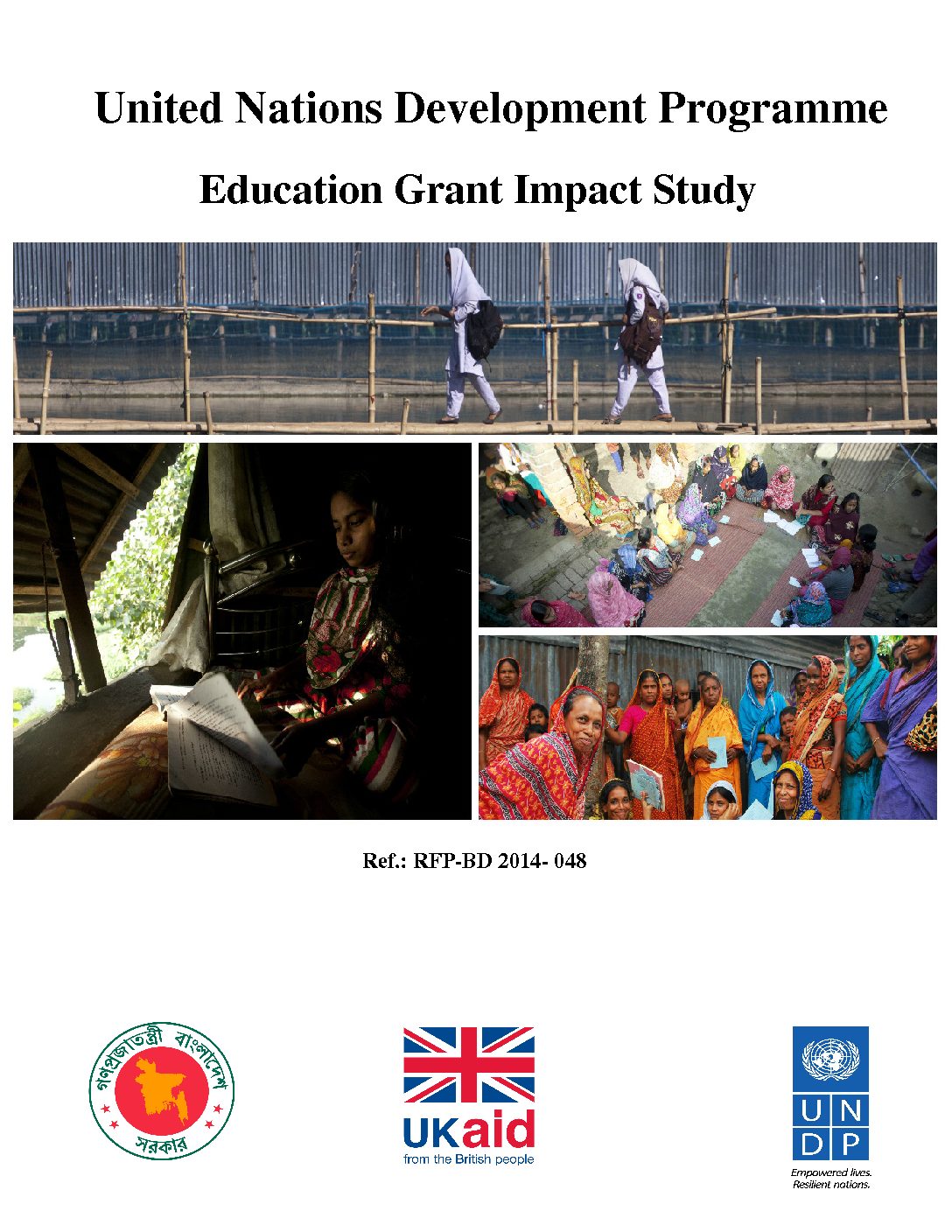Resources
Education Grant Impact Study
Posted on July 04, 2015

UPPR’s Education Grant (EG) in urban slums was undertaken in 23 towns/cities, provided direct cash to the extreme poor and poor households to support the education of children in primary and secondary level. The overall objective of EG was to increase primary and secondary school Enrolment and completion rates among the children aged between 5 and 18 years, from extreme poor and poor families living in slums. While UPPR entered into its final year of implementation, the project sought to document the a)achievements of the EG, b) the strengths and weaknesses of the EG project and c) resources required to scale up the EG program in other urban areas. This research design of study is formed around these three central topics2.The study shows that UPPR has contributed to great achievements in respect of enrolment drop-out and completion rates. In the intervention area Gross Enrolment Rate (GER) reached to 132% in primary, 92%in Secondary, Net Enrolment Rate (NER) 94% in primary and 69% in secondary, cohort3 completion rate reached to 90% in primary and 71% in secondary. The PEC appeared rate was 82% in the project areas. These achievements are quite good against the national statistics of 2014 from Department of Primary Education (DPE). The statistics of DPE 2014 are: GER for Primary 108%, GER for secondary 69%, NER for Primary 98%, NER for secondary 64%, Cohort completion rate for primary 79% and for secondary58%, Cohort dropout rate for primary 21%and for secondary 42%, Pass rate of PEC 98%.The significant improvement is attributed to the effect of a) Impact of EG, b) Impact of UPPR project, c)Success of Advocacy programs, d) Other development programs. In the absence of baseline data it is difficult to assess the EG intervention impact based on robust statistical measurement. Yet, through the qualitative and opinion surveys we obtained qualitative evidence of positive impact. The guardians’ perceptions are that the project is successful in reducing Child Labour, early marriage and early pregnancy, increasing employment opportunity for the adolescents, especially for girls, raising aspiration for higher education. Some of the drawbacks of the EG program as identified by the study are inadequate grant amount, shortfall in the number of grants compared to demand and EG for maximum 3 years, untimely payment of money, questionable school teacher quality seen in the demand for private tutors.